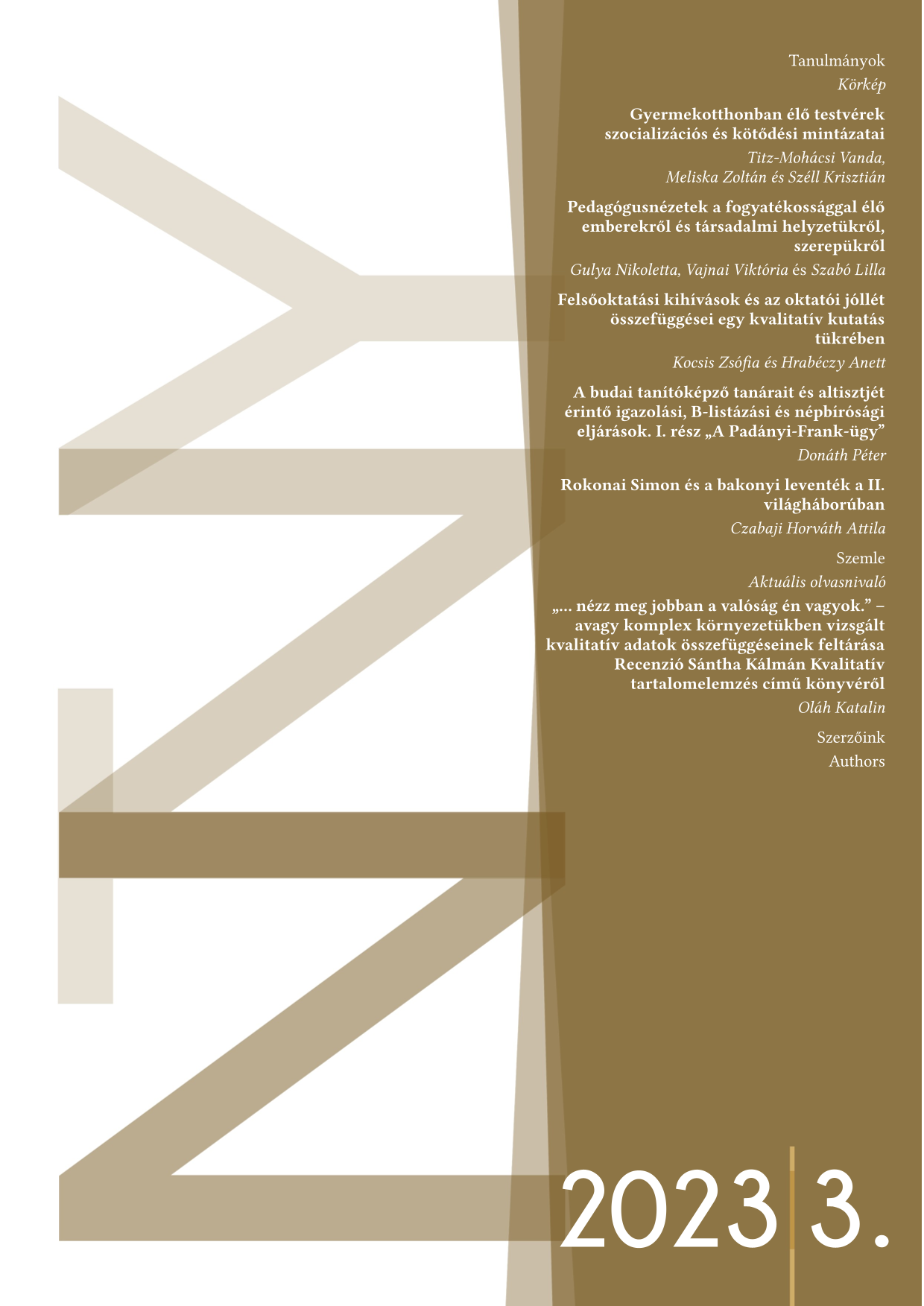Absztrakt
A gyermekek stabil érzelmi fejlődéséhez egy megbízható referenciaszemélyre van szükség, míg a kognitív fejlődést rugalmas és jól strukturált környezet támogatja. A családhoz hasonlóan a gyermekotthonban zajló szocializációs és kötődési folyamatokat számos szereplő és interakció befolyásolja. A tanulmány célja, hogy a családból kiemelt testvércsoportok és nevelőik percepciója alapján feltárja a gyermekotthonban élő gyermekek szocializációs és kötődési mintázatait, így vizsgálja az egyes aktorok (szülők, testvérek és sorstestvérek, gyermekotthonon kívüli közeli barátok, nevelők, iskola) szocializációjukban betöltött szerepét. A tanulmány alapját adó etnográfiai jellegű kutatás során a gyermekek (7 fő) és nevelőik (5 fő) körében megfigyelésekre, interjúkra, kötetlen beszélgetésekre, valamint a gyermekek hivatalos irataiban található információk áttekintésére került sor. Az eredmények alapján a szülők szerepét és funkcióját egyértelműen a nevelők és a gyermekfelügyelők veszik át, a gyermekek általuk kapcsolódnak szüleikhez és az iskolához is. Az általános testvéri kapcsolatokban szoros és gyenge kötődések is megjelentek, egyfajta ambivalencia volt tapasztalható. A sorstestvérek („benti” barátok) inkább játszótársak, vagy „bandázásban” partnerek, a gyermekotthonon kívüli közeli barátok pedig kapcsolódást jelentenek a külvilághoz, illetve egészséges család- és személyközi kapcsolati mintákat is biztosíthatnak. Az iskola szerepe kettős a gyermekotthonban élő gyermekek életében: kapcsolat a külvilággal, illetve siker- és kudarcélmények forrása.
